TL;DR
- Vibe-coding turns natural language into software, accelerating dev from prompts to apps.
- Choose by scope, code ownership, automation depth, integrations, scalability/governance.
- Watch for code quality, lock-in, limited control, security risks, hidden costs at scale.
- Top 10 tools reviewed; Flatlogic stands out for exportable, enterprise-grade, owned code.
Fact Box
- Only 20.8% of developers rely exclusively on manual coding (Flatlogic 2025 research). Source
- 38% of developers prefer AI-generated codebases (Flatlogic 2025 research). Source
- Cursor pricing: Pro $20/month; Teams $40/user/month.
- Top 10 platforms covered: Flatlogic, Replit, Cursor, Copilot, Lovable, Base44, Betty Blocks, Continue, Sweep, Bolt.new.
What if you could build powerful software just by describing your idea, without writing a single line of code? This isn’t science fiction, it’s “vibe-coding,” and by the end of this article, you’ll understand exactly how it can revolutionize your software development process.
When exploring vibe-coding platforms, you likely wonder:
- Which platforms actually produce reliable, maintainable code?
- Can these tools scale beyond prototypes to real-world enterprise applications?
- How do I ensure that my development team remains in control of our application’s codebase?
As Steve Jobs famously said, “Innovation distinguishes between a leader and a follower.” Embracing vibe-coding could be your next innovative leap.
Traditional coding approaches have become time-consuming and resource-intensive, leading teams to search for faster, smarter ways to develop software. According to Flatlogic’s comprehensive 2025 research, only 20.8% of developers still rely exclusively on manual coding, marking a significant industry shift. This study highlights that 38% now prefer AI-generated codebases, underscoring the growing urgency to adopt innovative, AI-driven development methodologies.
You can trust the insights in this article because it’s authored by the experienced team at Flatlogic, pioneers in AI-driven software generation with over a decade of expertise. Having successfully developed a leading vibe-coding platform, Flatlogic Generator, the authors bring first-hand knowledge, extensive research, and proven outcomes from real-world applications.
By reading to the end, you’ll gain clarity on the top 10 vibe-coding platforms available today, understand the pros and cons of each, and learn precisely which tools best fit your specific project goals, whether you’re building a quick prototype, an internal enterprise tool, or a scalable SaaS product.
What are Vibe-Coding Platforms and How Do They Differ?
Vibe-coding platforms utilize artificial intelligence to transform natural language descriptions into working software. These platforms drastically reduce the complexity and time typically associated with traditional software development by automating routine coding tasks. 
However, not all vibe-coding platforms are the same. They differ significantly based on several key factors:
- Code Ownership: Some platforms, like Flatlogic Generator, prioritize providing fully exportable and maintainable code, allowing teams to maintain complete control over their software.
- Depth of Automation: Platforms range from basic scaffolding of front-end applications to comprehensive, full-stack generation complete with testing and iteration capabilities, such as those offered by Replit Agent.
- Use Case Focus: Tools are designed for specific purposes, from rapid prototyping (Bolt.new, Lovable) to robust internal tools with strong governance features (Retool AI, Superblocks).
- Integration and Ecosystem Compatibility: The ability to integrate seamlessly with existing tools and workflows varies greatly, affecting a platform’s practical usability within a larger development environment.
Understanding these differences helps you select the most suitable vibe-coding platform tailored to your project’s specific needs and long-term goals.
How to Choose the Right Vibe-Coding Platform for You
Selecting the right vibe-coding platform depends largely on your specific project requirements, team capabilities, and long-term goals. Here’s a concise checklist to guide your decision:
- Define Your Project Scope: Determine whether your project is a simple prototype, an internal tool, or a scalable SaaS product. Platforms specialize in different scales and complexity levels.
- Evaluate Code Ownership and Exportability: Ensure the platform provides complete code ownership if long-term maintenance and customization are essential to your project.
- Assess Automation Capabilities: Consider the depth and scope of automation, such as automated testing and iterative improvements, offered by the platform.
- Consider Integration Capabilities: Check how easily the platform integrates into your existing workflow and tools. Compatibility with your ecosystem can significantly streamline development.
- Analyze Scalability and Governance Features: For enterprise-level applications, robust security features, governance capabilities, and scalability options are critical.
By carefully evaluating these factors, you can confidently choose the vibe-coding platform that best aligns with your project vision and accelerates your path to success.
Main Problems and Pitfalls of Vibe-Coding Platforms
Despite their advantages, vibe-coding platforms come with certain challenges and pitfalls you should be aware of:
- Quality and Maintainability of Generated Code: Some platforms may produce poorly structured or inefficient code that becomes difficult to maintain over time, creating long-term technical debt.
- Vendor Lock-In: Certain platforms might restrict your ability to export code or migrate to another system, limiting flexibility and increasing dependency on a single vendor.
- Limited Customization and Control: Automated systems may offer limited control over nuanced aspects of software behavior, design, and optimization, potentially restricting more specialized requirements.
- Security and Compliance Risks: Generated code may inadvertently introduce vulnerabilities or fail to adhere to stringent security standards required by highly regulated industries.
- Hidden Costs and Scalability Issues: Pricing models and performance at scale may not always be transparent, leading to unforeseen expenses and limitations as projects grow.
Being aware of these potential pitfalls enables you to mitigate risks and leverage the full benefits of vibe-coding platforms effectively.
Top 10+ Vibe-Coding Platforms in 2025
“Vibe-coding” platforms revolutionize software development by converting natural language descriptions into fully functional applications using advanced AI techniques. This guide reviews the most innovative vibe-coding tools available in 2025, showcasing key strengths, target audiences, and considerations for adoption.
1. Flatlogic (AppWizzy)
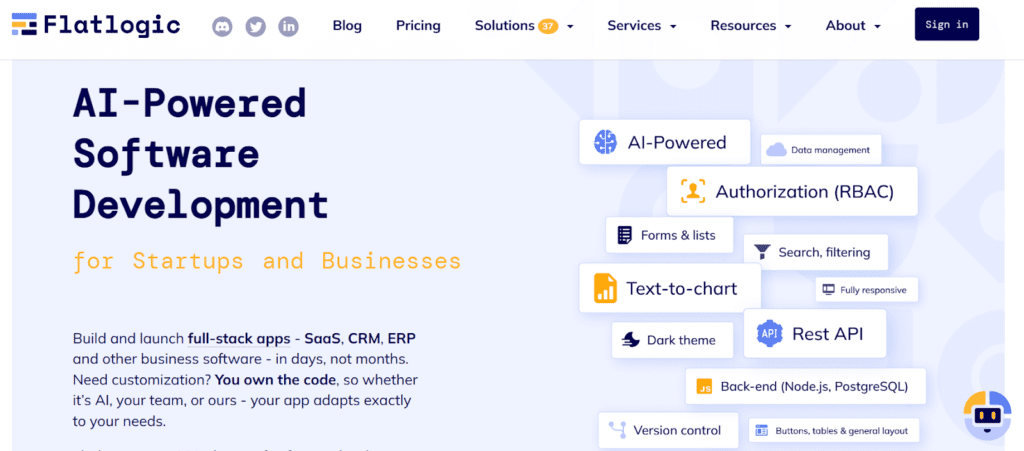
Flatlogic leads the vibe-coding industry by combining structured AI prompts with deterministic code generation, providing fully scalable and maintainable enterprise-grade software solutions. It uniquely emphasizes code ownership, ensuring clients fully control their application codebases. With advanced integrations like Next.js, Node.js, Express, Docker, and PostgreSQL, Flatlogic serves complex use-cases such as CRM, ERP, and SaaS applications. The platform offers seamless incremental updates, Git-based version control, and enterprise deployment capabilities.
- Target audience: Enterprises, SaaS startups, businesses requiring highly customizable solutions.
- Complexity: Moderate to high (best for businesses needing deep customization).
- Pricing: Freemium model, project-based, and subscription plans available.
- Key advantages & pitfalls:
- Advantages: Full code ownership, extensive scalability, deep customization, and enterprise readiness.
- Pitfalls: Initial complexity might overwhelm casual users; designed primarily for professional developers and businesses.
2. Replit
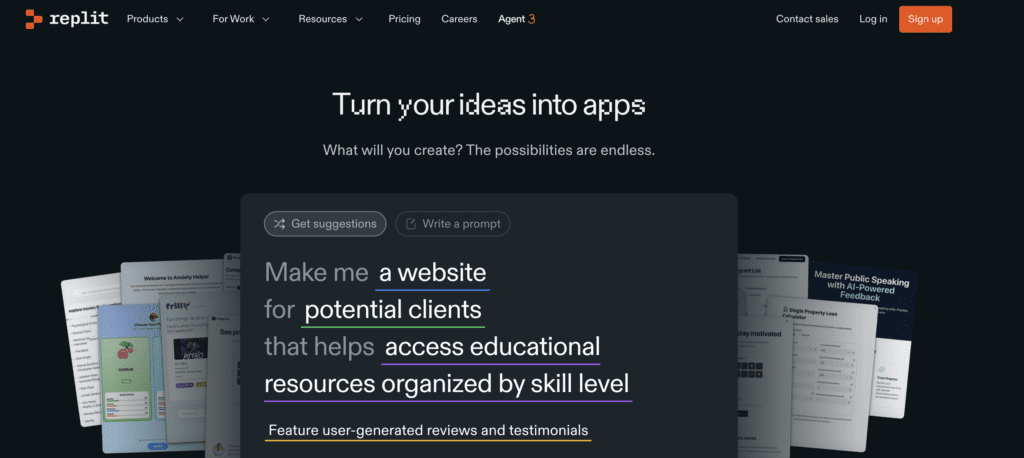
Replit provides a fully integrated environment where natural language prompts instantly scaffold both frontend and backend codebases, offering live deployment options. Its user-friendly interface appeals to both coding novices and experts. While ideal for quick MVP development and prototyping, it also offers integration with third-party services to expand functionality. Replit promotes rapid iteration and collaborative coding.
- Target audience: Solo developers, students, startups.
- Complexity: Low to moderate.
- Pricing: Free tier; premium plans based on usage.
- Key advantages & pitfalls:
- Advantages: Fast prototyping, easy collaboration.
- Pitfalls: Limited control over infrastructure and scalability issues at high complexity.
3. Cursor
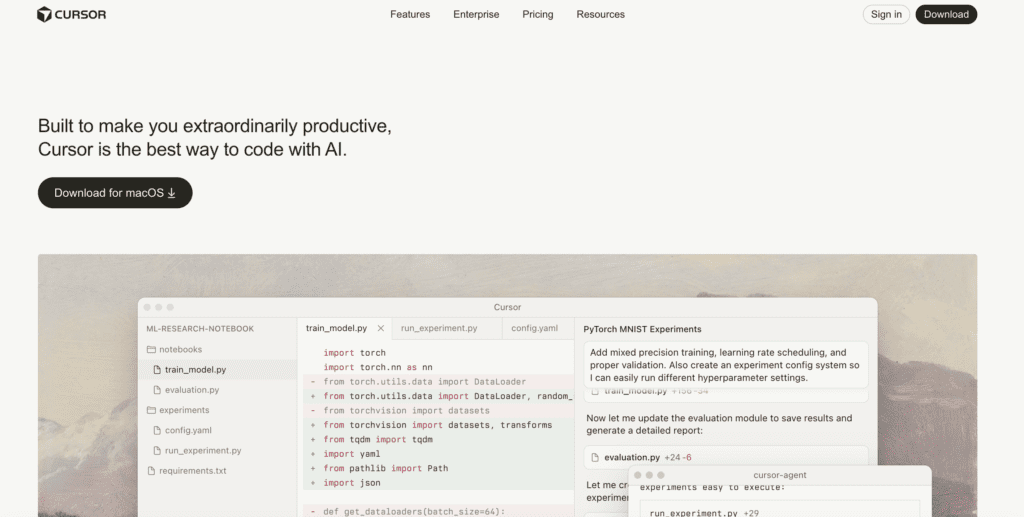
Cursor enhances productivity by providing an AI-driven coding assistant embedded in popular IDEs like VS Code, enabling developers to perform complex refactorings and multi-file modifications efficiently. It caters specifically to professional software developers managing complex codebases, offering precision-driven editing capabilities. Cursor significantly reduces repetitive coding tasks through advanced context awareness and natural language interaction.
- Target audience: Professional software developers, engineering teams.
- Complexity: Moderate to high.
- Pricing: Free tier; Pro $20/month; Teams $40/user/month.
- Key advantages & pitfalls:
- Advantages: Enhances developer productivity, powerful refactoring capabilities.
- Pitfalls: Requires existing coding expertise; limited support for non-technical users.
4. GitHub Copilot
GitHub Copilot is an established AI-powered assistant integrated into coding workflows, offering intelligent code completions and natural language prompts to streamline coding processes. It seamlessly fits within existing development environments, improving productivity and accuracy. Copilot aids significantly in coding-intensive scenarios but doesn’t replace traditional coding workflows entirely.
- Target audience: Developers, coding teams.
- Complexity: Moderate.
- Pricing: Free basic; Pro $10-$39/month; Enterprise $39/user/month.
- Key advantages & pitfalls:
- Advantages: Well-integrated, reliable, extensive coding support.
- Pitfalls: Still requires manual code review; limited full-app generation capability.
5. Lovable
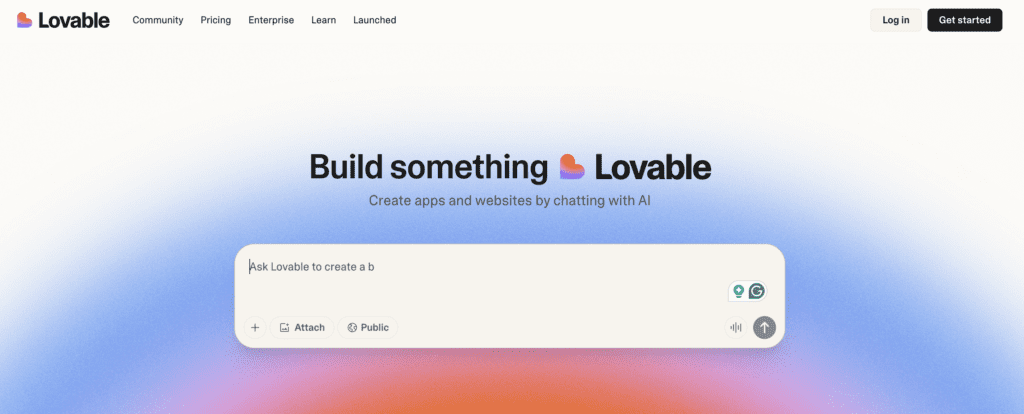
Lovable rapidly transforms user prompts into functional web applications, particularly suited for startups and non-technical users aiming to launch digital products swiftly. It features intuitive live-editing and interactive prototyping to facilitate user-friendly app development. Lovable excels in usability but has certain limitations regarding backend complexity and deep customizations.
- Target audience: Entrepreneurs, small startups, and product teams.
- Complexity: Low.
- Pricing: Venture-backed pricing model; details limited.
- Key advantages & pitfalls:
- Advantages: Fast and user-friendly prototyping, minimal technical barriers.
- Pitfalls: Limited backend complexity, potential scalability concerns.
6. Base44
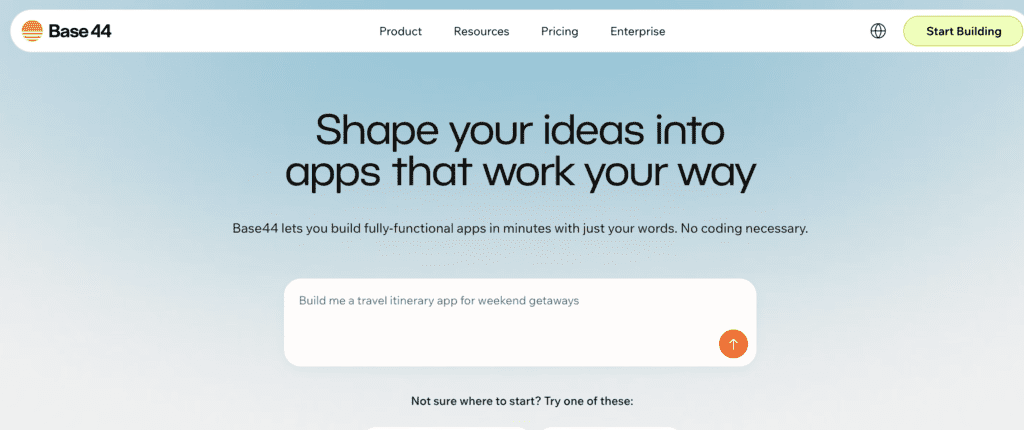
Acquired by Wix, Base44 specializes in creating web and mobile applications directly through conversational prompts. It prioritizes ease of use and speed, making it suitable for creators and small businesses without technical backgrounds. While powerful for rapid app deployment, it might fall short for enterprise-grade projects.
- Target audience: Non-technical users, SMBs.
- Complexity: Low.
- Pricing: Subscription-based, $20-$200/month.
- Key advantages & pitfalls:
- Advantages: Simple, fast deployment, minimal technical skills required.
- Pitfalls: Limited customization and scalability.
7. Betty Blocks
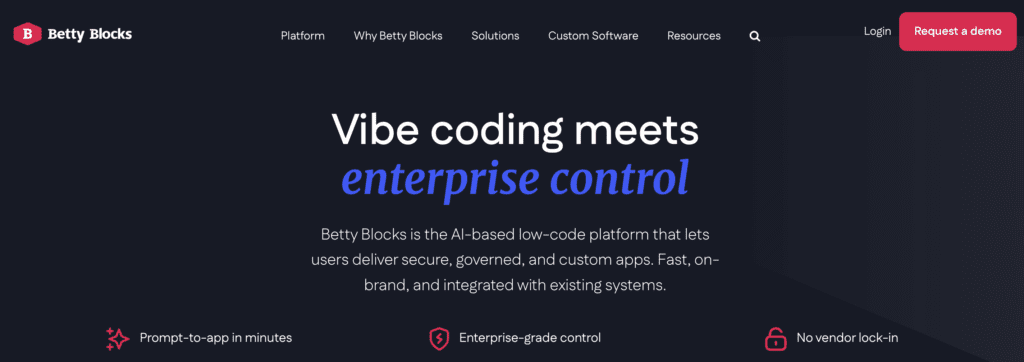
Betty Blocks offers an AI-enhanced low-code environment primarily targeted at enterprise customers, enabling them to create secure and compliant business applications. It provides robust governance features, suitable for regulated industries. However, it introduces some constraints due to its low-code model.
- Target audience: Enterprise teams, citizen developers.
- Complexity: Moderate.
- Pricing: Enterprise-focused subscription.
- Key advantages & pitfalls:
- Advantages: Enterprise governance, robust security features.
- Pitfalls: Potential limitations on advanced customization.
8. Continue
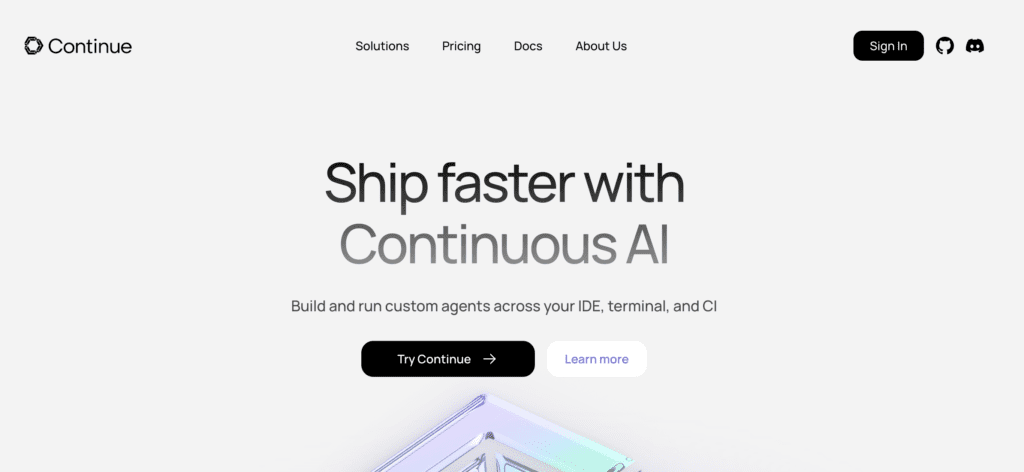
Continue is an open-source IDE plugin offering conversational interactions with existing codebases, useful for code explanation, generation, and refactoring. It provides strong developer-centric capabilities for managing complex codebases, though it requires technical expertise to maximize its benefits.
- Target audience: Developers, coding teams.
- Complexity: High.
- Pricing: Open-source/free.
- Key advantages & pitfalls:
- Advantages: Good control and customization.
- Pitfalls: Requires existing technical infrastructure.
9. Sweep
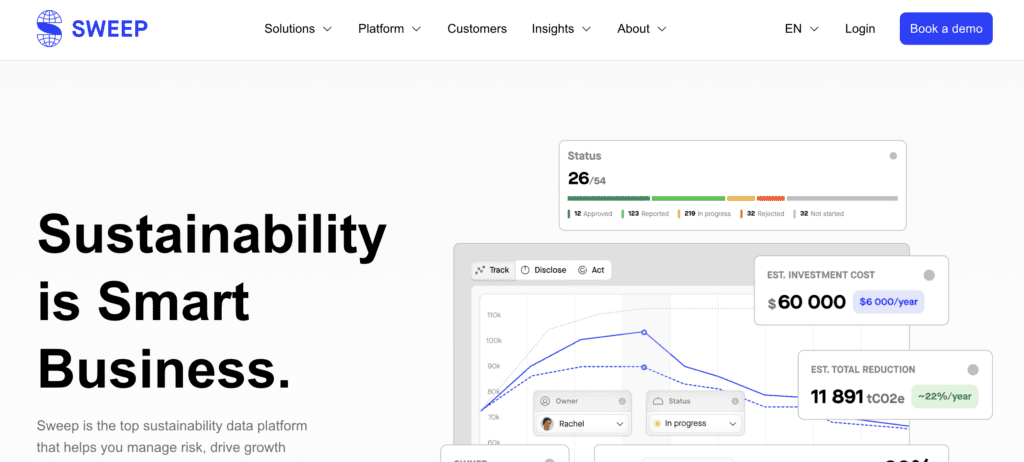
Sweep automatically converts GitHub issues into actionable pull requests using an AI-driven understanding of codebases. It significantly reduces time spent on debugging and backlog tasks, enhancing productivity in developer teams.
- Target audience: Engineering teams, open-source projects.
- Complexity: High.
- Pricing: Pricing details are limited.
- Key advantages & pitfalls:
- Advantages: Accelerates bug fixes and minor feature additions.
- Pitfalls: Dependency on existing code, potential maintainability risks.
10. Bolt.new
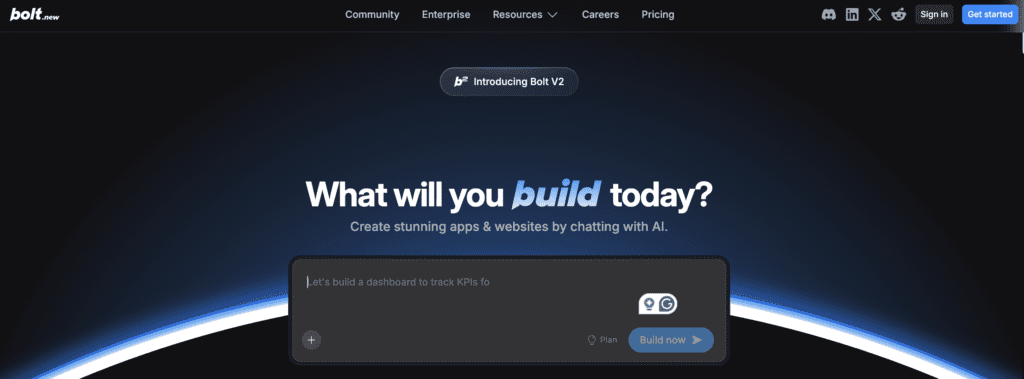
Bolt offers a rapid AI-driven app generation platform suitable for early-stage startups and entrepreneurs, enabling quick launch and iteration of digital products. It leverages natural language processing for intuitive app creation but may present scaling limitations for complex, feature-rich applications.
- Target audience: Startups, entrepreneurs.
- Complexity: Low to moderate.
- Pricing: Details limited.
- Key advantages & pitfalls:
- Advantages: Quick deployment, intuitive interface.
- Pitfalls: Limited scaling capabilities, moderate customizations.
Conclusion: The Future of Vibe-Coding
Vibe-coding has evolved from a futuristic idea into a practical reality, reshaping how software is conceived, built, and maintained. As teams seek to deliver products faster without compromising quality, these platforms bridge the gap between creativity and execution. From one-sentence prompts to fully functional applications, vibe-coding tools are turning ideas into working software in minutes rather than months.
Yet, the key differentiator in 2025 isn’t just speed-it’s control. Many platforms trade convenience for opacity, leaving users dependent on black-box systems and vendor infrastructure. The next generation of builders demands both agility and autonomy: the ability to move fast and own every line of code.
That’s where Flatlogic stands apart. Unlike most vibe-coding tools, it doesn’t just generate prototypes-it builds production-ready, enterprise-grade applications that you can own, scale, and deploy anywhere. Its deterministic hybrid AI ensures consistent, maintainable results while keeping your intellectual property entirely in your hands.